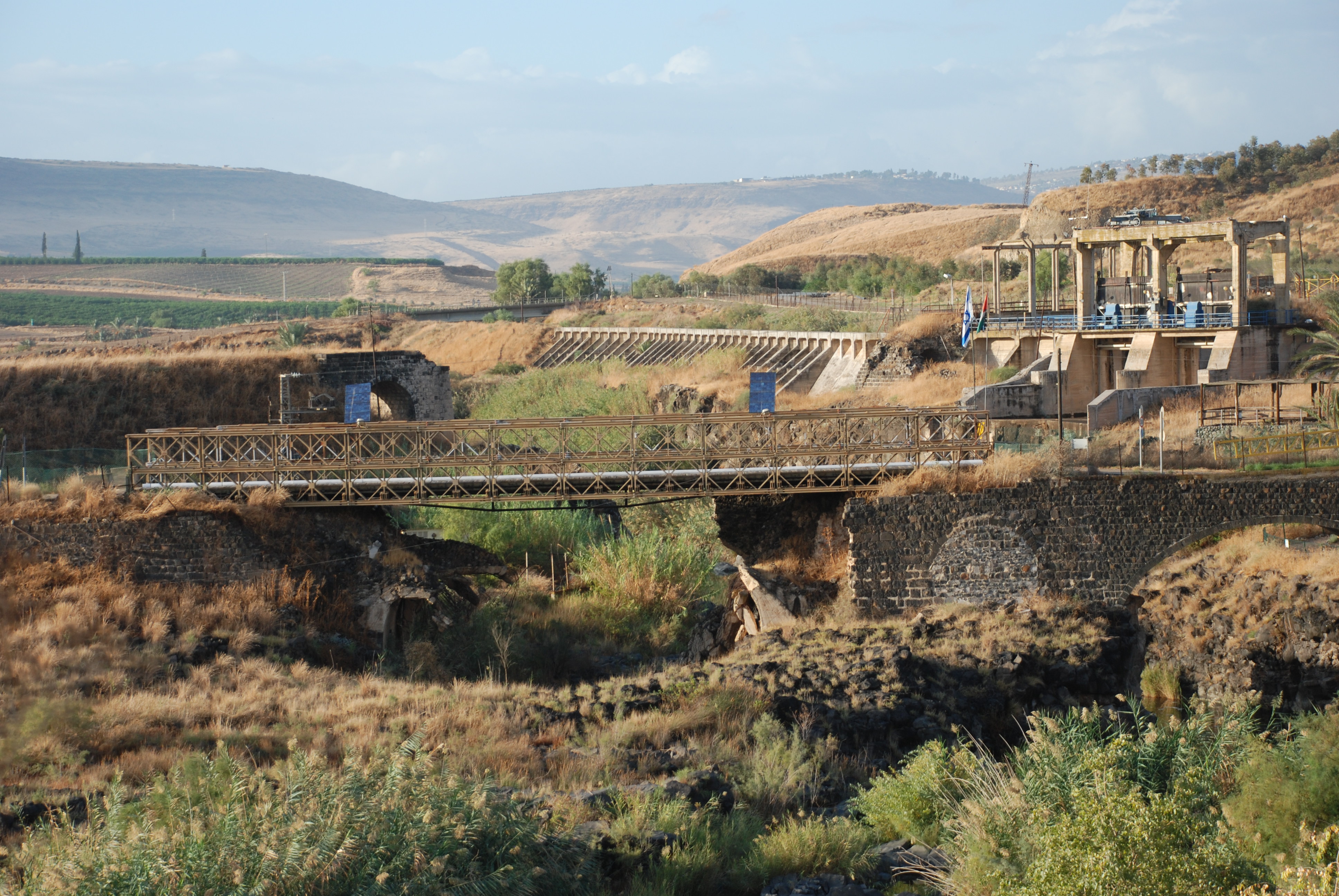
Our 3rd visit to Israel was shorter than our previous trips. It was a 3-day stopover that was part of a Mediterranean cruise. With only two days at the Ashdod port, we chose to spend one night in Jerusalem and return to memorable sites around Jerusalem. We spent the second night aboard the ship as it sailed up the coast. On the third day, we disembarked in Haifa. We made a request to our private guide, Jacob Firsel, to escort us to a few less frequented sites in the Galilee.
Jacob asked if we were interested in visiting Naharayim (Hebrew for two rivers). Although neither one of us were familiar with this historical spot, we were curious. Why did Jacob insist that we spend our precious time visiting an abandoned hydroelectric plant situated on the former grounds of Kibbutz Gesher?
As we drove through the beautiful countryside of the Galilee, Jacob told us that Naharayim was a small piece of land on the border between Israel and Jordan where the Yarmuk River flows into the River Jordan. The area was historically significant for many reasons.
From 1930 to Israel’s War of Independence in 1948, this hydroelectric plant produced a significant amount of power for the British Mandate of Palestine. Naharayim was the realized dream of Pinchas Rotenberg, the founder of the Israel Electric Company. Like other early Zionists, he designed ways to improve the Land of Israel using modern technology and also saw the need to forge alliances with the neighboring countries. In 1927, Pinchas signed an agreement with King Abdullah I of Jordan to build the first hydroelectric plant in the area. The construction of the plant created canals with small islands.
Naharayim was also the place where Golda Meir purportedly tried to dissuade King Abdullah from participating in the war. Her words did not prevent the inevitable.

We parked the car in an empty lot. I immediately noticed a towering electronic fence. On the other side of the fence was the hydroelectric plant. During the day, visitors are allowed to walk through the gate. At night, the gate is locked and electrified. On the other side is a designated pathway that skirts the border between Israel and Jordan.

Warning signs remind tourists of more dangerous times.
The Jordanian Arab Legion and the Iraqi invasion forces targeted the kibbutz and Naharayim in the early stages of the War of Independence. To stop the Iraqi forces from attacking Jewish settlements in the Jordan Valley, the sluice gates of the Degania Dam were opened. This action forestalled the Iraqi-Jordan invasion. The hydroelectric plant never operated again.

However, the abandoned structure remains standing as a constant reminder of its demise.
In 1949, the cease-fire agreement designated that the border would go through the Naharayim Lake. From that point until 1995, the dams, bridges, and artificial lake were inaccessible.
The 1994 peace treaty between Israel and Jordan was signed at Naharayim. Israel ceded the land to Jordan and the Jordanians leased it back to the Israelis. The people of Kibbutz Ashdot Yaacov were able to work on the land and operate the tours at Naharayim.

As we walked, we remarked on the peaceful feeling of the area. Israeli and Jordanian guard towers reminded us that we were straddling the border of a once hotly contested land. We could only imagine what life was like in earlier decades.

When we returned to the parking lot, I asked Jacob about a plaque that was written in Hebrew with faded pictures of seven girls. He pointed to the Jordanian guard tower and hesitantly told us about the tragedy that had occurred at this beautiful and peaceful spot. A few years after the peace treaty was signed, a Jordanian soldier of Palestinian heritage started shooting at students who were on a field trip. Following this horrific event, the late King Hussein of Jordan extended his personal condolences to the families of the 7 slain girls. Despite this, in 2011, Jordan’s Justice Minister released the Jordanian soldier.

Jacob candidly told us that he usually waits until after the tour to share information about this unprovoked and senseless shooting.
As we drove back to the Haifa port, I understood why Jacob had wanted to take us to this site often referred to as the Island of Peace. It represented the tenuous relationship between Israel and its Arab neighbors. Walking along the border, we saw first-hand how the border was only a simple line that separated two countries. And yet this area’s history was intertwined with both peaceful and tragic events. The peace between Israel and Jordan is based on the words written in the treaty. However, if the words are not supported by actions, then prolonged peace will not be possible.
To visit Naharayim arrangements need to be made through Kibbutz Ashdot Ya’akov [email protected]
Sandra Bornstein, an international educator and writer, has taught K-12 students in the United States and abroad as well as college level courses at the University of Colorado and Front Range Community College. After teaching in India, Sandra wrote May This Be the Best Year of Your Life: A Memoir and started a blog that focuses on Jewish culture, international education, worldwide travel, and living abroad. A book trailer provides a taste of Sandra’s India experiences.
